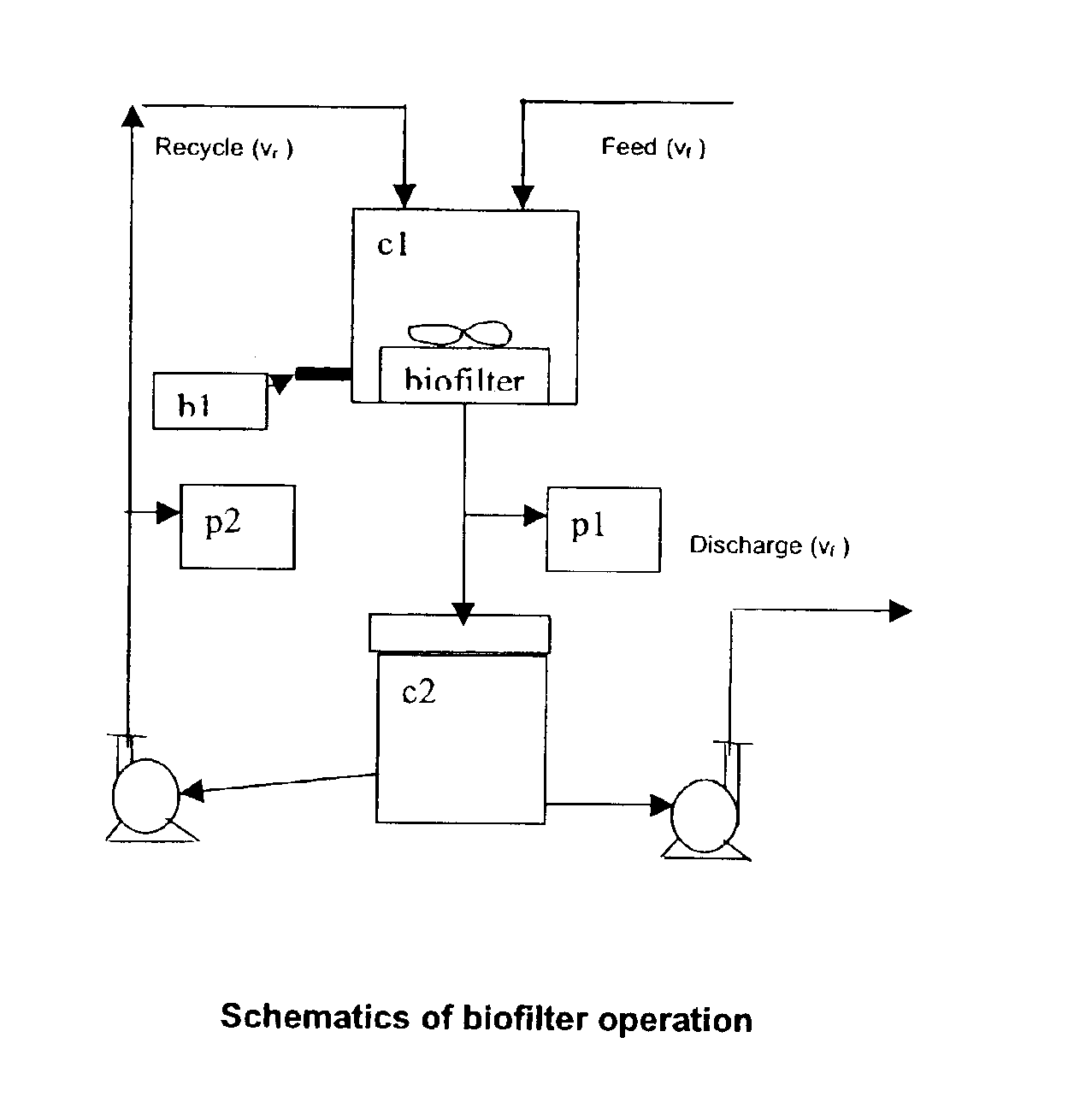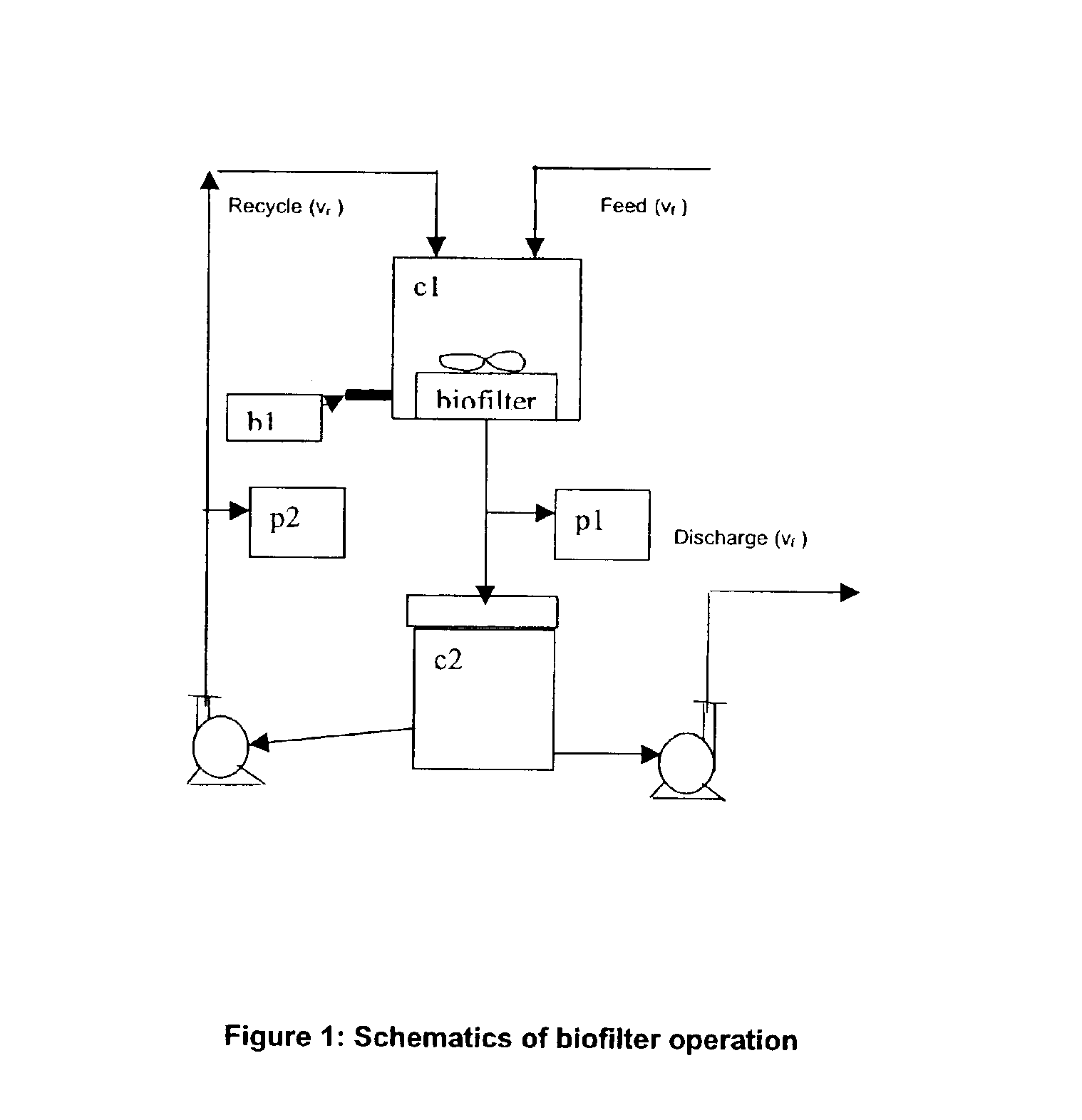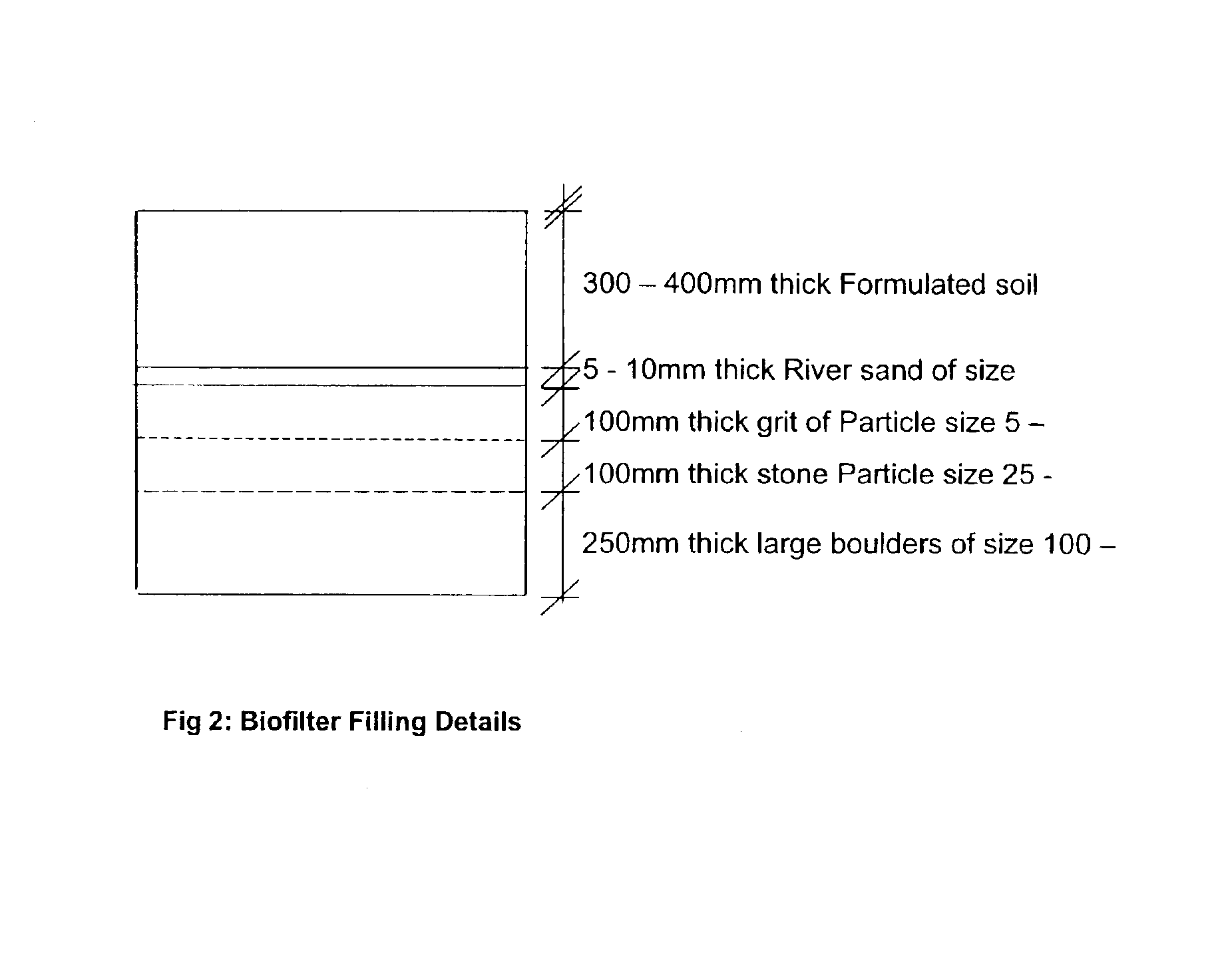Process for treatment of organic wastes
a technology for organic wastes and processing methods, applied in the direction of fertilizer production, water/sludge/sewage treatment, application, etc., can solve the problems of large amount of waste generated by households, affecting the quality of soil, water and air, and prohibitive operation costs
- Summary
- Abstract
- Description
- Claims
- Application Information
AI Technical Summary
Benefits of technology
Problems solved by technology
Method used
Image
Examples
example 1
[0091]FIG. 1 shows a schematic of the system employed. A first tank c1 25.0 m×10.0 m×1.0 m below ground was constructed. A slope of {fraction (1 / 100)} gradient was provided on the bottom surface of the first tank c1. The bottom surface was made impervious. A second tank c2 for collection of renovated water was provided. A pipe p1 connected the first tank c1 to the second tank c2. A second pipe p2 connected the second tank c2 back to the first tank c1 to recirculate the processed reusable water for further processing. This is done to achieve higher quality of reusable water. A biodindicator b1 is inserted at various stages of processing to monitor the quality of the organic waste during the various stages of the process. The filter fillings consisted of a 300-400 mm layer of formulated earthworm Pheretima elongata soil media and 0.3-0.4 m under-drain of stone rubble of sizes varying from 200 mm to 2 mm. The performance of filter operated in batch mode is given in Table 1. Hydraulic l...
example 2
[0099]A schematic of a biotower is shown in FIG. 3. The results of the use of the biotower for renovation of water from organic waste are given in Table 3. A Biotower is constructed using 6 vessels of 30.0L each mounted on a frame vertically one above the other. Each vessel contains the SBT media.
[0100]In a typical experiment carbonaceous substrate (glucose / sucrose) is charged form the top of the biotower at a predetermined flow rate. The outlet at the bottom of the filter is collected and analyzed for COD. Bioindicators b1 (ORP probes) were inserted all along the tower profile and response was recorded in data acquisition system.
[0101]The results show that very high efficiency removal of COD can be achieved. However the overall rate of COD removal for simple molecule (BOD) could be 0.3-0.5 kg / m3 per day. The reactivity of the bed and earthworm activity all along the depth found to be uniform. In view of the multiple stages the water quality parameters (BOD, COD, Nitrogen, suspended...
example 3
[0103]In these experiments a mineral source is contacted with the water from the organic waste containing the pollutant (natural & synthetic) in conical flask. The flask is mounted on a shaker incubator to facilitate solid-liquid contact typically for 30 min. The temperature is maintained at 28-30° C. The pollutant level in the liquid is determined by filtering off the solids from the sample reaction mixture. Results of sewage water contacted with mineral source are given below. Table 4 shows the effect of mineral source in wastewater renovation. The results show that use of mineral source in the range 250 mg / L brings about substantial removal of pollution level in the wastewater.
[0104]
TABLE 4Effect of additives for COD and nitrate removalMineral Powder*SUBSTRATESAdditive mg / LInitial mg / LFinal mg / LNitrates (as sewage)20010775.9Nitrates (KNO3)6610574COD (as sewage)200191112*Mineral source powder containing silica (20-30% Si), alumina (6-8% Al), iron (1-6% Fe), Potassium (2-8% K), cal...
PUM
 Login to View More
Login to View More Abstract
Description
Claims
Application Information
 Login to View More
Login to View More - R&D
- Intellectual Property
- Life Sciences
- Materials
- Tech Scout
- Unparalleled Data Quality
- Higher Quality Content
- 60% Fewer Hallucinations
Browse by: Latest US Patents, China's latest patents, Technical Efficacy Thesaurus, Application Domain, Technology Topic, Popular Technical Reports.
© 2025 PatSnap. All rights reserved.Legal|Privacy policy|Modern Slavery Act Transparency Statement|Sitemap|About US| Contact US: help@patsnap.com



